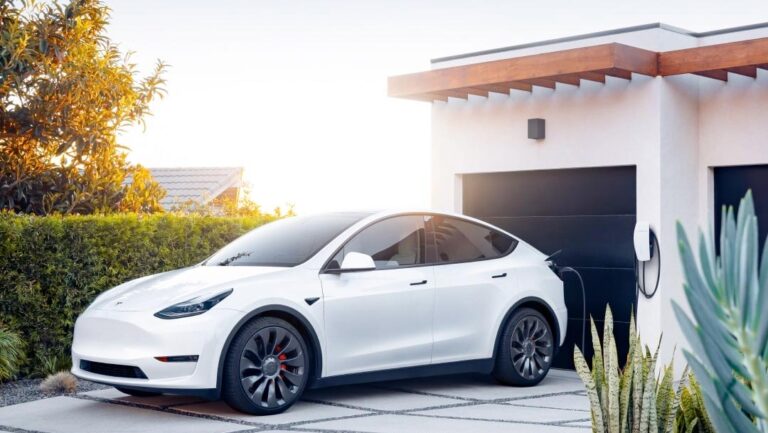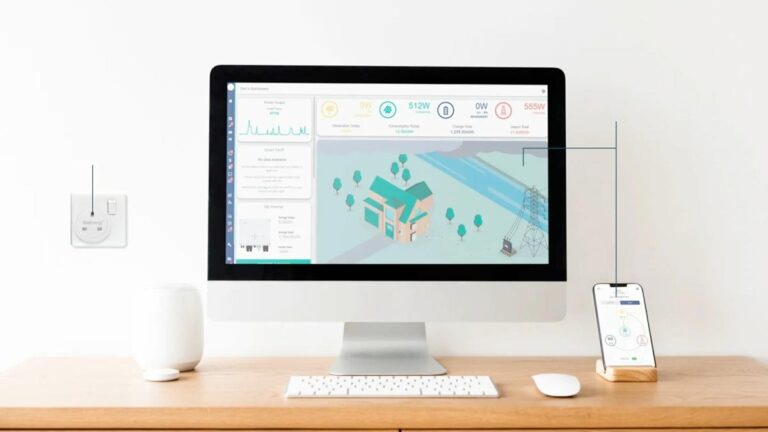There are many good quality solar panels available but which ones should you choose?
In this article, we look at a few examples, talk about what to look out for, why and how to ensure that your solar panel system is as productive as possible.
Which solar panels are best?
Compare these charecteristics
- Product & Performance warranty – the best solar panels will have a 25 year product and a 25 performance warranty.
- Module efficiency – solar capacity tells lies, module efficiency is the best way to compare solar panels.
- Low light performance – particularly important for the UK. How well do they perform in low light?
Small differences can add up to £000’s over the systems lifetime so it’s worth spending the 10-15p per Watt extra for a high quality solar panel.
Most efficient solar panels in 2021
Jinko N-Type 395W
Datasheet specification
Rated Power: 395W
Module efficiency: 20.7%
Watts per Sqm: 206.93 W
Length: 1,855 mm
Width: 1,029 mm
Depth: 30 mm
Vmpp: 37.37 V
Impp: 10.57 A
Isc: 11.27 A
Voc: 44.61 V
Product warranty: 25 years
Performance warranty: 30 years
LG Neon R V5 380W
Rated Power: 380W
Module efficiency: 22%
Watts per Sqm: 220 W
Length: 1,700 mm
Width: 1,016 mm
Depth: 40 mm
Vmpp: 37.4 V
Impp: 10.17 A
Isc: 10.84 A
Voc: 42.9 V
Product warranty: 25 years
Performance warranty: 25 years
Q Cells G9 390
Datasheet specification
Rated Power: 390W
Module efficiency: 20.3%
Watts per Sqm: 203.14 W
Length: 1,840 mm
Width: 1,030 mm
Depth: 32 mm
Vmpp: 37.74 V
Impp: 10.2 A
Isc: 10.68 A
Voc: 45.03 V
Product warranty: 12 years
Performance warranty: 25 years
JA Solar Perc 345W
Datasheet specification
Rated Power: 390W
Module efficiency: 20.3%
Watts per Sqm: 203.14 W
Length: 1,840 mm
Width: 1,030 mm
Depth: 32 mm
Vmpp: 37.74 V
Impp: 10.2 A
Isc: 10.68 A
Voc: 45.03 V
Product warranty: 12 years
Performance warranty: 25 years
*Definitions at the bottom of this article
The most efficient solar panel unsurprisingly is the most expensive – the LG Neon at roughly twice the cost per watt compared to the others on this list.
As a rule of thumb, ~20%+ efficiency is very good. All of the above solar panels are MCS certified and are well suited for roof-top use.
Rankings
1. LG Neon R V5
The most expensive panel takes the top spot in our list. Although, it was much closer than the cost would suggest. Their enhanced performance warranty – 10% higher over 25 years than the closest Jinko 395W panel and higher efficiency may make the cost increase worth it over the lifetime of the system.
Best for: Those that just want the best. Long term outperformance.
Disadvantage: Not necessarily the most cost-efficient.
2. Jinko N-Type 395W
My favourite. This solar panel is very efficient and at an angle on a roof looks completely matt black. A customer commented that their slate roof actually looked better after we had installed these panels than before.
Watch out for the inverter as it will have to handle 11.27 A at maximum. You don’t want the inverter to switch off during peak production so something to look out for.
Best for: Roofs not limited for space, aesthetics. Warranty length.
Disadvantage: Higher current – not suitable for some inverters.
3. Q Cells G9 390W all-black.
Looks fantastic, there are no gaps between cells. Made by the same company that produces solar panels for Tesla. Could easily have taken the Jinko panels spot.
Best for: Low light and high-temperature fluctuations (you won’t see the difference in MCS calculations but they can be significant).
Disadvantage: Product warranty. If this solar panel had a 25-year product warranty this panel may have taken the top spot from LG as it’s perfect for the UK.
4. JA Solar Percium 345W
The most efficient smaller solar panel available in the UK. Great for when you’re trying to fit as much solar capacity onto a roof as possible. Lower shading effect.
Best for: Space constrained roofs. You may be able to fit many more of these panels on a roof. Lowest price per watt.
Disadvantage: Aesthetics.
The most efficient solar panel may not be the most productive for your roof. The most productive panel will depend on the space available and most importantly the inverter that will deliver the power generated by your solar panels.
Why the inverter is the most important part of your solar panel system
Let’s compare 3 popular hybrid inverters in the UK.

Max. DC input: 5500 W
Start-up Voltage: 80 W
Min. Input Voltage: 65 V
Max. Input Voltage: 600 V
Min. MPPT Voltage: 65 V
Max. MPPT Voltage: 530 V
Max. efficiency: 97.6%
Max. Input Current: 36 A

Max DC input: 7000 W
Start-up Voltage: 120 V
Min. Input Voltage: 90 V
Max. Input Voltage: 600 V
Min. MPPT Voltage: 90V
Max. MPPT Voltage: 520 V
Max. efficiency: 97.5%
Max. Input Current: 34.4

Max. DC input: 7000 W
Start-up Voltage: 140 V
Min. Input Voltage: 100 V
Max. Input Voltage: 550 V
Min. MPPT Voltage: 120 V
Max. MPPT Voltage: 500 V
Max. efficiency: 97.9%
Max. Input Current: 26.2 A
One of the most important factors for a solar inverter is having the lowest input voltage and lowest min start-up voltage to make sure your solar panels can deliver as much of the power generated as possible throughout the day/year. Especially in the UK where we have low light conditions in winter, mornings and evenings.
You need to ensure the inverter can handle peak production. Not being able to handle the maximum output of the array can mean that your system shuts off during times of peak production.
Lastly, maximum efficiency is taken into account if there is a significant difference.
Using the above methodology we can determine which inverter is most favourable for a given installation.
1. Fronius Primo GEN24 Plus 3.6k
Arguably the best hybrid inverter in the UK for installations up to 5.5 kW. Made in Austria by Fronius. High quality.
Best for: Very low start-up and min voltages ensures your system will still output energy even in very low light conditions.
Disadvantage: Not suitable for installations larger than 5500 W.
2.Solis Hybrid 5G 3.6k
A great hybrid inverter for ‘oversizing’ the solar array Vs the inverter. Made by NASDAQ listed ‘Ginlong Solis’. The founder went to Bristol University so this author may be biased!.
Best for: Larger domestic installations over 5500 W. Very good technical support. LCD screen displaying energy flow. Made by the NASDAQ listed Ginlong Solis.
Disadvantage: Slightly higher minimum voltages than the Fronius.
3. LUX Power Hybrid 3.6k
Claims to be capable of handling peak production of 7000W same as the Solis inverter. I could not identify the company behind the LUX inverter brand.
Best for: Low cost installations.
Disadvantage: Could not identify the company behind the brand or find out who manufactures the inverters.
Process for constructing the most productive solar panel system:
- Given each solar panel’s size/dimensions, what is the maximum capacity (Watts) that I can fit into the available space?
- Which inverter is best suited to that solar panel choice given the size of the array, grid contraints and datasheet specifications?
- Run a simulation comparing the suitable inverters given the fluctuating solar irradiance throughout the year, ideally using a local weather station.
Leoht will do all of this for you so you know that we are proposing the most productive system for your home
Datasheet definitions.
Standard Test Conditions (STC)
STC is the set of criteria that a solar panel is tested at. Since voltage and current change based on temperature and intensity of light, among other criteria, all solar panels are tested to the same standard test conditions. This includes the cells’ temperature of 25℃ (77℉),light intensity of 1000 watts per square meter, which is basically the sun at noon, and the atmospheric density of 1.5, or the sun’s angle directly perpendicular to the solar panel at 500 feet above sea level.
Maximum Power Point Voltage (Vmpp)
The Vmpp is the voltage when the power output is the greatest. It is the actual voltage you want to see when it is connected to the MPPT solar equipment (inverter) under standard test conditions.
Maximum Power Point Current (Impp)
The Impp is the current (amps) when the power output is the greatest. It is the actual amperage you want to see when it is connected to the MPPT solar equipment (inverter) under standard test conditions.
Short Circuit Current (Isc)
Short Circuit Current is how many amps (i.e. current) the solar panels are producing when not connected to a load but when the plus and minus of the panels’ wires are directly connected to each other. If you just measure with an ammeter across the plus and minus leads, you will read Isc. This is the highest current the solar panels will produce under standard test conditions.
When determining how many amps a connected device can handle, like an inverter, the Isc is used.
Open Circuit Voltage (Voc)
Open circuit voltage is how many volts the solar panel outputs with no load on it. If you just measure with a voltmeter across the plus and minus leads, you will read Voc. Since the solar panel isn’t connected to anything, there is no load on it, and it is producing no current.
This is a very important number, as it is the maximum voltage that the solar panel can produce under standard test conditions, so this is the number to use when determining how many solar panels you can wire in series going into your inverter
How many solar panels do I need? Try our calculator and find out in 30 seconds.
(Source: https://www.altestore.com/blog/2016/04/how-do-i-read-specifications-of-my-solar-panel)
















